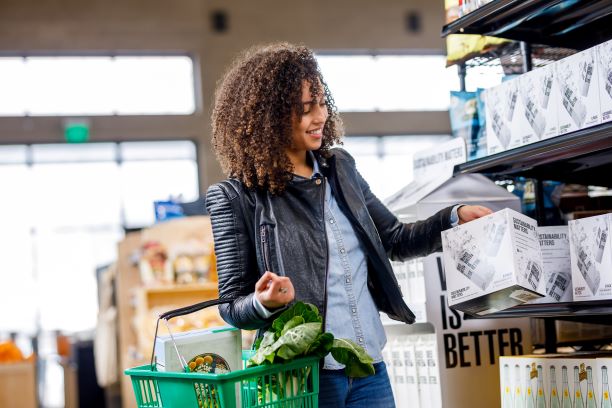The retail sector has seen a huge change in the last few months – and it was already experiencing pressure. The rise of new online-only entrants to the sector and decline in the use of brick-and-mortar stores have accelerated over the last few weeks. Different parts of the sector have also been exposed to very different challenges, with interest in luxury goods dropping rapidly, and basic goods seeing unprecedented levels of demand. I caught up with Edward Kerrigan, Principal Client Adviser for EMEA Retail at SAS, to talk about change, challenge and the future of the retail sector.

Ed, what do you think have been the biggest challenges for retailers over the last few months?
For many retailers, the biggest challenge was simply to have enough staff to get products onto shelves quickly enough. Most of them, especially the food retailers, were scrabbling around trying to recruit staff to stock shelves and to build capacity to deliver online orders. For example, Tesco has employed an extra 50,000 people over the last few months. Retailers are quite good at dealing with known peaks in demand – Christmas, for example – but this was so rapid and so unexpected that it is much harder to deal with.
Could better demand forecasting have helped retailers at the start of the pandemic?
There are some really good forecasting models available looking at demand patterns. And I think that many retailers have found them very useful. However, in the context of COVID-19, I’m not sure if any demand models could have substantially affected their demand forecasting – simply because it was such an unprecedented event with no comparable historical data or context. Retailers’ immediate priority in the beginning of the pandemic was business continuity – simply keeping their supply chains running, their shelves replenished, and recruiting more staff to cope with and manage the demand. Going forward I think retailers will be looking very hard at their current analytical models to see if they are fit for purpose. I suspect that they will be trying to add a lot more granularity to their models and take forecasting to a completely new level.
How feasible do you think that’s going to be? Do we have enough data?
That is a good question. We are in an unprecedented position. Supply chains have been massively disrupted. For a reasonable model, you would normally want about three years’ worth of data, and that’s just not available. Instead, retailers are being forced to rely on continual real-time feedback from their stores, warehouses, online orders and suppliers. At present we don’t really have enough data for traditional forecasting. However, I have seen some good work on aspects like product segmentation. I think there is a lot going on, but retail modellers are having to think differently about how to build models.
We have seen huge changes. But what would you say has stayed the same in retail?
I think the importance of customer experience hasn’t changed at all. Actually, if anything, it has become even more important. Nobody likes having to queue up outside shops, even if we recognise that it’s important. However, people are going to remember if you made them queue, and then wouldn’t let them in, because their policy stated only one member per household allowed in the store. I also think that the retailers that ramped up their online ordering capacity fastest will also emerge strongest because customers don’t need to physically travel to a store to do their shopping. Those retailers who have an online shopping facility have a clear competitive advantage over those who do not in the context of COVID-19.
Have you seen signs of real innovation in retail recently?
There are plenty of retailers increasing their online capacity or moving new services online. However, there are also some examples of business model change. For example, one of the services I use in Dublin to get my groceries now is a third-party company. They go to the stores for you and will do your shopping and then deliver it, or pick up your "click-and-collect" order. I think we might see more of those services developing in the future. It’s a bit like Just Eat or Deliveroo. I heard one story of an English pub that put out leaflets saying that all its staff were now available to do people’s shopping, rather than putting them on furlough. There’s some really creative thinking going on.
What about other retailers, like garden centres and DIY stores? What have you seen happening there?
There is an opportunity there, with everyone at home and with time on their hands. However, the challenge for many of these stores is global supply chains. Nonhorticultural items, for example, are sourced from the Far East and COVID-19 has massively disrupted these networks. There’s potential for growth, but only if you can get the products in-store.
The long view
I’ve heard it said that the pace of change has never been this fast, and yet it will never be this slow again. This has never been a truer statement than it is today in the context of retail. If we look at how retail has dynamically evolved over the years and adapted both to emerging technology and consumers’ buying behaviour and preferences, COVID-19 has forced many changes, particularly in the area of digital transformation within retail. How retail will look in a post-COVID-19 world is continuing to evolve.
One thing for certain is that adapting to the dynamic nature of retail will continue to be business-critical. Using the latest technology with sophisticated advanced analytics and forecasting models will become more important than ever to achieve this. Whether online or in store, business with this ability will continue to improve the customer experience and have an advantage.

